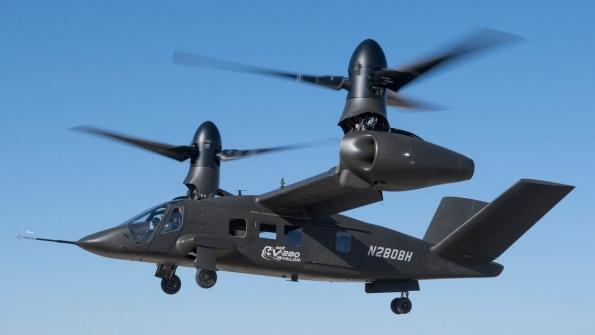Hamartia Antidote
ELITE MEMBER

- Joined
- Nov 17, 2013
- Messages
- 35,188
- Reaction score
- 30
- Country
- Location
V-280’s Speed, Range, Agility Right For FLRAA, Army Chief Says | Aviation Week Network
The Army in December announced Bell’s tiltrotor V-280 had won the FLRAA contest to replace much of its Sikorsky H-60 fleet.

V-280
NASHVILLE, Tennessee—The U.S. Army’s choice for its Future Long Range Assault Aircraft (FLRAA) prevailed not just because of the speed and range, but also its increased maneuverability when dropping off soldiers and cargo, the service’s top officer says.
The Army in December announced Bell’s V-280 tiltrotor had won the FLRAA contest to replace much of its Sikorsky H-60 fleet. The decision prompted a protest from Sikorsky-Boeing, which had offered the dual-rotor Defiant X for the competition. The U.S. Government Accountability Office (GAO) last month denied the protest, allowing the Army to move ahead with Bell.
Army Chief of Staff Gen. James McConville says the V-280’s cruise speed of more than 280 kt. and combat range of more than 500 nm will be important for future operations in the Indo-Pacific. The company also was able to demonstrate that the aircraft can be agile when needed, he says.
“What they’ve also done well is to get the aircraft more maneuverable at the destination,” McConville told reporters at the Army Aviation Association of America’s annual symposium here. “It’s good that you can go long range. It’s good that you can go fast. But then you have to be able to do the type of operations that we do—maneuver at the destination.”
McConville says both sides put together “really innovative, transformational models” as part of the competition. The Army is excited about the V-280 because of its capabilities, and the company has also invested in manufacturing to produce the aircraft.
A GAO report on the protest released earlier this month says that Bell’s offering is significantly more expensive than the Sikorsky-Boeing submission, with V-280 development pegged at $8.087 billion compared to the Defiant X’s $4.445 billion.
McConville says the Army has “put constraints on the cost to operate and the cost to buy,” adding that it will see how it plays out.
The report also said that Sikorsky limited its plans for Modular Open Systems Architecture to just its aircraft avionics, while Bell planned for more significant MOSA implementation. McConville says MOSA is important because of how long FLRAA will need to operate and be upgraded.
“I think what we recognize is anything we build today we’re building for 40 years, so we’ve got to have the capability with open architecture,” he says.
